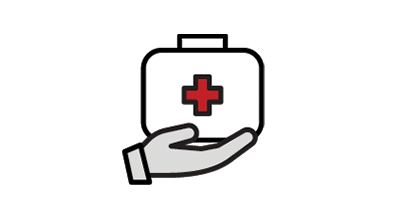Recognizing Warning Signs and Symptoms
Explore each section to learn more.

It’s important that you and those around you can spot the signs of a stroke and heart attack. Knowing what to look for and getting medical attention quickly can improve your chances of recovering.
Heart Attack Warning Signs
Pain or discomfort in chest. Most heart attacks involve discomfort in the center of the chest that lasts more than a few minutes, or that goes away and comes back. It can feel like uncomfortable pressure, squeezing, fullness or pain.
Discomfort in other areas of the upper body. Symptoms can include pain or discomfort in one or both arms, the back, neck, jaw or stomach.
Shortness of breath. May occur with or without chest discomfort.
Other signs. These may include breaking out in a cold sweat, nausea or lightheadedness.
F.A.S.T. Warning Signs
Use the letters in F.A.S.T. to spot a stroke:
- F = Face Drooping — Does one side of the face droop, or is it numb? Ask the person to smile. Is the person's smile uneven?
- A = Arm Weakness — Is one arm weak or numb? Ask the person to raise both arms. Does one arm drift downward?
- S = Speech Difficulty — Is their speech slurred?
- T = Time to Call 9-1-1
Stroke Symptoms
Watch for sudden:
- NUMBNESS or weakness of the face, arm, or leg, especially if it’s only on one side of the body
- CONFUSION, trouble speaking, or difficulty understanding speech
- TROUBLE SEEING in one or both eyes
- TROUBLE WALKING, dizziness, or loss of balance or coordination
- SEVERE HEADACHE with no known cause


- Slide number 1
- Slide number 2
- Slide number 3
- Slide number 4